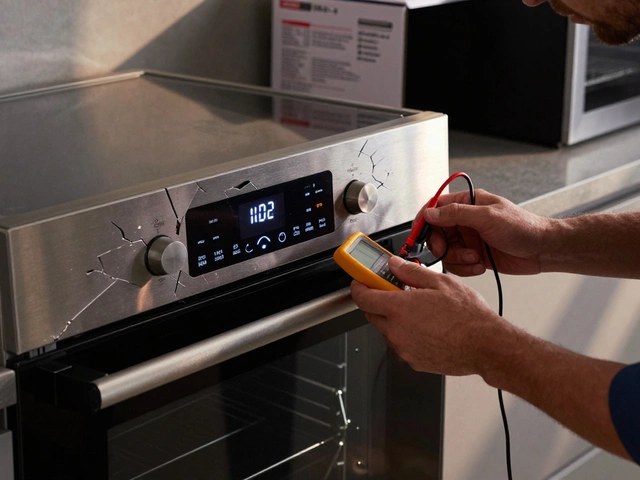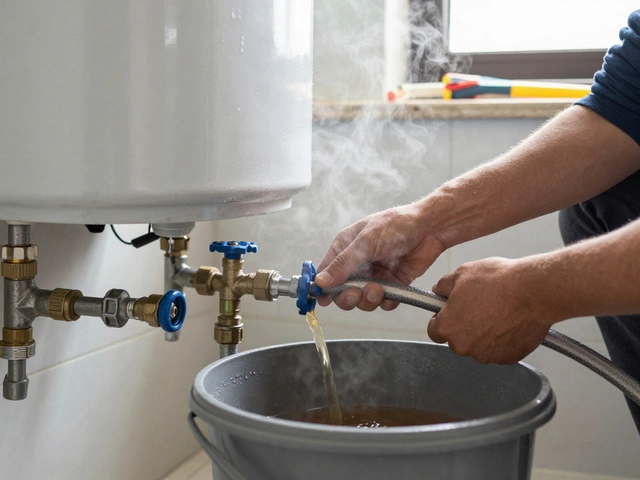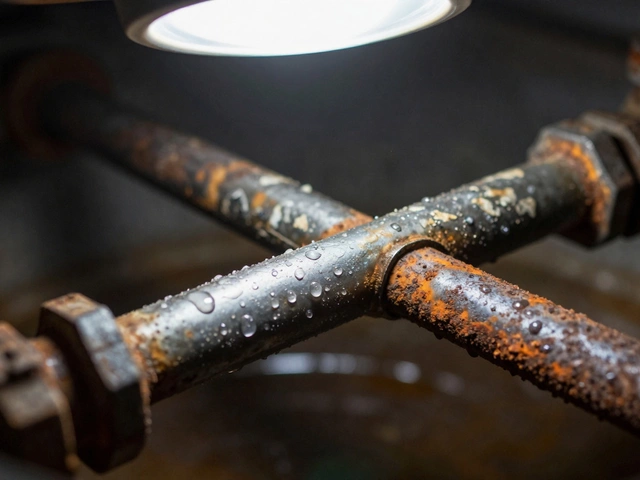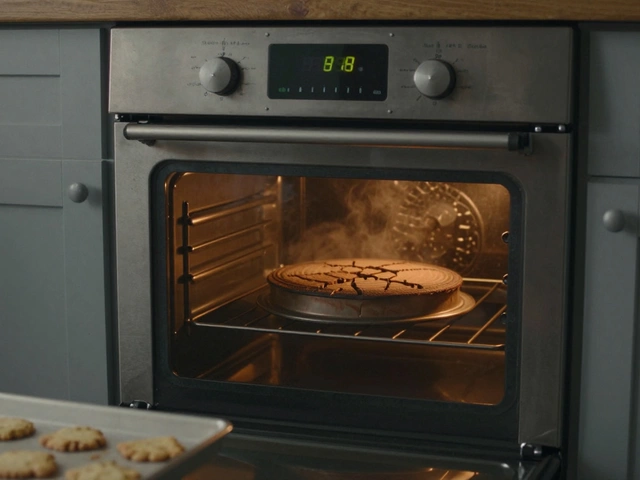Ever looked at your trusty oven and wondered, 'How much longer can you keep going?' It's not just you. Many folks are curious about how long they can expect their oven to last. Believe it or not, some have seen their ovens go strong for 20 years! But that doesn’t happen by luck alone.
Electric ovens are like any other appliance in your home—they thrive on attention. Regular maintenance can be your oven’s best friend, stretching its lifespan beyond the usual 10-15 years. A bit of cleaning here, a check-up there, and you might find yourself alongside tales of ovens working beyond two decades.
Why do some ovens last longer? Practical upkeep, to be honest. Simple tasks like cleaning spills immediately or letting a pro handle the tricky stuff like faulty wiring can add years to an oven's life. On the flip side, ignoring these red flags can lead to bigger problems down the road.
But let's keep it real: even the best-cared-for ovens will eventually need an upgrade. If you're facing frequent repairs, skyrocketing energy bills, or an oven that just doesn’t cook evenly anymore, it might be time to start browsing for a new one.
- Understanding Oven Lifespan
- Simple Maintenance Tips
- Common Problems and Fixes
- Knowing When to Upgrade
Understanding Oven Lifespan
When it comes to electric ovens, the big question is usually how long they’re going to last. On average, an electric oven’s lifespan is about 13 to 15 years, but with a bit of luck and a lot of care, you can stretch that number up to a whopping 20 years.
Why such a wide range? It mostly boils down to three factors: usage, maintenance, and quality of the oven itself. Generally, ovens that are used less frequently and receive regular care tend to have longer lifespans. Basic maintenance can go a long way, and it doesn't always have to be extensive.
Quality Matters
When we talk about quality, it’s about the brand and the build. A well-built oven from a reputable brand often means higher durability. While they might cost a bit more upfront, these appliances often pay off in the long run through fewer repairs and longer usage.
Here’s an interesting tidbit: ovens with simpler designs tend to outlast those with more complicated settings. Fewer electronic gadgets often mean fewer things that can go wrong.
Usage Frequency and Maintenance
How often you use your electric oven also plays a role in how long it lasts. Daily use means more wear and tear, so if your oven is the powerhouse of your kitchen, make regular maintenance a priority—think of it as a routine oil change for your car.
The Importance of Regular Check-Ups
Routine checks are essential. This means cleaning out food particles and burnt spills regularly. Every now and then, it’s a good idea to have professional inspections to catch tiny problems before they become big headaches.
Here's a quick list of what regular maintenance might look like:
- Monthly interior cleaning: Prevent residue build-up
- Checking and replacing worn-out seals
- Calibrating the thermostat for accurate temperatures
Performance can also be a tell-tale sign of your oven’s age. Remember, if you start noticing uneven cooking or longer preheats, these could be indicators that your trusty old oven is nearing its end.
Simple Maintenance Tips
Keeping your electric oven in top shape isn't rocket science. A little regular maintenance can make all the difference—saving you time, hassle, and potentially a lot of cash.
1. Give It a Regular Clean
Think of your oven like a car. Would you drive around with a filthy windshield? Of course not! An oven needs regular cleaning too. Remove crumbs and spills after each use to avoid buildup.
- For minor spills, wipe them with a damp cloth once the oven cools down.
- For a deeper clean, mix a bit of baking soda and water to form a paste. Apply it on stubborn stains and let it sit overnight before wiping off.
2. Check Seals and Gaskets
Ever opened the oven door and felt a gust of hot air? That might mean your door seals or gaskets are worn out. If the oven isn't closing properly, it wastes heat and energy.
- Inspect the seals regularly for tears or deformation.
- If they look worn, consider getting them replaced to ensure your oven retains heat effectively.
3. Inspect Heating Elements
The heating elements are the heart of your oven. If meals are coming out unevenly cooked, there might be an issue.
- Check for any visible signs like blistering or breakage. If found, it’s time to call a technician.
4. Keep an Eye on the Thermostat
An inaccurate thermostat can lead to overcooked or undercooked meals.
- Use an oven thermometer to test if the oven's temperature matches the set point. If it's off by more than a few degrees, a technician can recalibrate it.
5. Clean or Replace Air Filters
Some models come with air filters that need attention. A clogged filter reduces efficiency.
- Check the manual for cleaning instructions or order replacements periodically.
Remember, a little attention goes a long way in increasing your oven's lifespan. Combine these simple tips with professional servicing every couple of years, and your appliance could well be a kitchen companion for up to 20 years.

Common Problems and Fixes
Electric ovens aren't invincible, and even the best-maintained machines encounter hiccups along the way. The key to a long-lasting oven isn't avoiding problems but knowing how to tackle them when they pop up. Here are a few common issues and practical fixes you can try before calling in the pros.
1. Oven Not Heating Properly
This is hands down one of the most frustrating issues. If your oven doesn't heat as it should, it might be the heating element acting up. Look for signs of damage like blisters or breaks in the element. If you spot any damage, it's likely time to replace it. But sometimes, it might just be a bad temperature sensor, which is worth checking too.
2. Uneven Cooking
Ever pulled out a pizza where one side is burnt while the other is perfect? That’s uneven heating. Sometimes, rearranging the racks helps. But other times, it might be the fan in a convection oven or the thermostat causing the hiccup. Ensure your oven is level, and if the problem persists, you might need to call a technician to check those parts.
3. Oven Door Won’t Close
An open oven door lets heat escape, messing with your cooking and heating up your kitchen. This is often due to faulty hinges or door springs. Inspect for any bends or breaks; replacing these parts can solve the issue. While you're at it, check the door gasket for wear and tear—this simple fix is often overlooked.
4. Strange Noises
If your oven starts humming a new tune, it could be the fan motor or a loose part on the inside. First, turn it off and inspect. Tightening screws or replacing a sway fan can often be a quick fix. If it's the motor, a replacement might be in order.
5. The Oven Light Is Out
This might not affect cooking but it's annoying. Check if the bulb has burned out. Remember to use a bulb designed for ovens—regular bulbs won’t do the trick due to the heat.
When dealing with electric oven repair, always prioritize safety. Unplug the oven before starting any DIY fixes. If you're uncertain or the fixes don't work, getting a professional involved is the smart choice.
Knowing When to Upgrade
So your oven's been with you through countless meals, but when is it time to call it quits? Recognizing when to upgrade not only saves money in the long run but also keeps your kitchen running smoothly. Here are some clear signs it might be time to say goodbye to your old oven.
Your Energy Bills are Skyrocketing
Yeah, we’ve all noticed those creeping energy bills. But did you know an inefficient oven is a sneaky culprit? Older models tend to guzzle electricity. If your bills are higher than usual without a logical explanation, it might be your oven waving a red flag. Consider this: swapping out for a newer, more energy-efficient model could actually pay for itself over time in savings.
Frequent Repairs
Repairing an electric oven every other month isn't only frustrating but can be more costly than buying a new one. If parts are breaking down frequently, it’s usually a sign they're just worn out.
Uneven Cooking
Notice your cookies are burnt around the edges yet raw in the middle? An oven that doesn’t cook evenly isn’t doing its job. Frequent calibration issues might mean it's time to retire your old pal.
Strange Noises, Odors, or Smoke
Listen to your appliance! Odd noises or smells—especially smoke—are huge red flags. These can indicate anything from faulty wiring to more serious safety hazards. Don’t ignore it.
Age of the Appliance
If your oven is nearing the two-decade mark, even with perfect care, technology has outpaced your appliance’s abilities. Investing in a new model can also mean getting modern must-haves like smart tech or self-cleaning options.
Still unsure? Here's a look at potential repair costs versus replacements:
| Issue | Approx. Repair Cost | New Oven Cost |
|---|---|---|
| Heating Element | $150 | Starts at $400 |
| Faulty Thermostat | $200 | Starts at $400 |
| Main Board Replacement | $300 | Starts at $400 |
Remember, while repairs can be patch-ups, continually adding up cost for an electric oven repair often means it’s wiser to upgrade. Keep an eye on sales for those energy-efficient models and snag yourself a deal. At the end of the day, a well-timed upgrade is a smart investment for your home and peace of mind.









